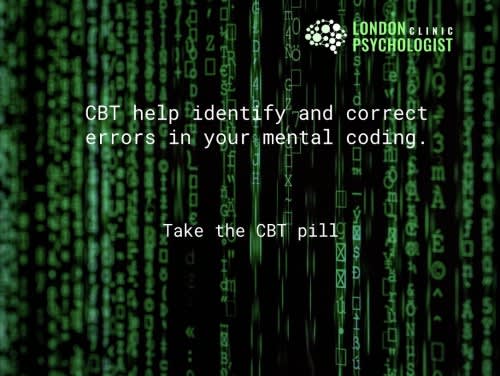How CBT Works

posted 24th March 2023
How CBT Works
CBT is based on the idea that our thoughts, feelings, and behaviors are all connected, and that by addressing one, we can change the other two. It focuses on the present moment, rather than the past, and looks at how our thoughts, feelings, and behaviors are impacting our current situation. CBT helps individuals identify and challenge unhelpful thoughts and beliefs, learn new coping strategies, and develop healthier behaviors. It is an evidence-based approach that has been used to treat various mental health issues.
CBT is an evidence-based, structured therapeutic approach that helps individuals identify and challenge irrational thoughts and beliefs while learning new coping skills. CBT can be used to treat phobias, GAD, social anxiety, depression, and trauma. Different methods can be used in each case depending on the individual and their specific needs.
For phobias, a common approach is systematic desensitization, which involves gradually exposing the individual to their fear in small, manageable doses. This helps the individual learn to manage their fear and anxiety in a controlled environment.
For GAD, CBT follows a cognitive-behavioral model, which includes teaching the individual to recognize and challenge their automatic thoughts and beliefs, and to develop healthier coping strategies.
For social anxiety, CBT focuses on helping the individual identify and challenge the negative beliefs that fuel their anxiety. This includes learning social skills and engaging in exposure therapy, which involves gradually exposing the individual to their fear in a safe, controlled environment.
For depression, CBT helps the individual identify and challenge their negative thoughts and beliefs, and reframe them in a more positive light. The individual also learns to set realistic goals and develop healthier coping skills.
For trauma, CBT can be used to help the individual process and work through their trauma in a safe, supportive environment. This includes gradually exposing the individual to their trauma in a safe, controlled environment, as well as teaching coping skills and relaxation techniques.
The outline of a CBT course for a client dealing with depression might include the following:
1. Developing an understanding of depression and the cognitive-behavioral model.
2. Identifying and challenging negative beliefs and thoughts related to depression.
3. Developing healthy coping strategies and increasing positive activities.
4. Learning relaxation techniques and challenging self-defeating behaviors.
5. Develop a plan for managing stress and triggers.
6. Setting achievable goals and developing a positive outlook.
7. Developing problem-solving skills.
8. Working through unresolved issues.
9. Developing a relapse prevention plan.
For more information about CBT follow the link below.



